I’ve heard people say that runners like to run away from their problems. As a lifelong runner, I’ve always run toward something — a goal, a relief from stress, my mom’s arms.
My penchant for running started at a young age. Shortly after my 3rd birthday, my mom signed me up for youth track and field. Every Monday night throughout that summer, she took me to the high school track, where the town held 50- to 400- yard races for kids ages 3 and up.
I hardly knew what it meant to run a 50-yard dash when I started.
“When they say ‘on your mark, get set, go, run as fast as you can until you see me,” Mom would say. “And don’t look back.”
“Because it can slow you down. Just run straight down the track toward me. … You’ll get a free ribbon at the end!”
Mom, a lover of all things free, seemed just as excited as I was.
I lined up with the other three-year-olds, as we jumped up and down, clapping our hands and waving at our parents.
“On your mark … get set … goooooo!”
We’d run down the track, our elbows brushing up against each other, our little bodies weaving in and out of the track lanes like free spirits rebelling against the straight and narrow. Some of us turned around, confused as to what we were doing. Others would stop in the middle of the track and sit down. Plop.
I kept going. I still didn’t know exactly why I was running, but I knew what I was running toward. My mom was always at the finish line, waiting to embrace me with open arms.
“Go Mal, Go! You can do it! Come on, honey, you’re almost there!”
I’d run into her arms and she’d swoop me up and give me a big hug. Then she’d wave my ribbon in the air. At that age, in my pre-perfectionism days, I didn’t care what place I came in. I just enjoyed running, and finishing with the promise of a ribbon. Over the years, I earned more ribbons and became more focused on coming in first.
Around the same time Mom started taking me to the track and field races, she took me to watch the Boston Marathon. It became one of our annual traditions.
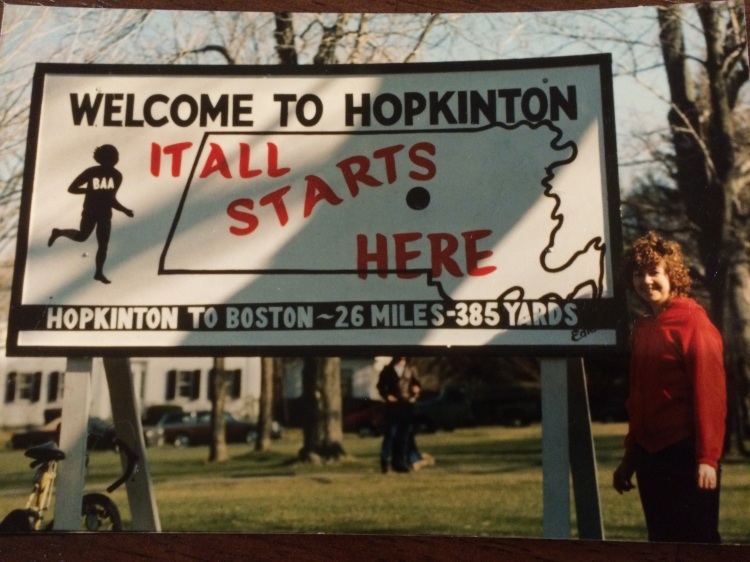
Every Marathon Monday, we’d get up early and pack sliced oranges, jellybeans, and water bottles to hand to the runners. My voice and little hands were always sore by the end of the marathon from all the cheering and high-fives.
“Go! You can do it!” my mom would yell.
I’d copy her and yell the same thing.
Mom had a fascination with watching runners, especially marathoners, but she didn’t actually like to run. She was more of a power walker — the kind that’s hard not to poke fun at. With a determined look on her face, she’d extend her arms in an exaggerated manner high above her head, and stretch out her legs as far as they could go. She’d charge down the streets of our tiny town, decked out in fluorescent workout gear. When I joined her, I had to run to keep up.

Mom was healthy by most people’s standards. But her healthy lifestyle wasn’t enough to prevent her from getting breast cancer.
She was diagnosed when I was 8 years old. Even when she was really sick, she still took me to the marathon. In 1996, on the 99th anniversary of the Boston Marathon, she told me that she’d be better the following year.
“We’ll celebrate the 100th anniversary together, Mal. It’ll be a special day.”
Mom had a mastectomy and was in remission for a brief period of time, which made me optimistic. But the cancer soon came back in her other breast. One day, she looked in the mirror, tilted her head and asked: “Mal, do you think I’m beautiful?” She had one breast, no hair, and yellow skin from the cancer, which had spread to her liver, her bone-marrow, and her brain.
“Of course you are, mommy.” I truly believed she was, but as I said it, I remember doubting my own beauty for the first time. Wrapped up in a package of perfection, I never realized the ugly truth about being perfect: you can’t be. I tried to control life’s blemishes and blunders, which became more prevalent in my life the sicker Mom got.
Playing pretend was one way to escape. When you’re a little girl and your mom is diagnosed with cancer, you try to tell yourself that she’ll make it, that you can wave your fairy princess magic wand and make her all better. You believe her when she tells you she’s a brave soldier in a battle, that she’s the Little Engine That Could, that even though she’s lost all her hair, one breast and 35 pounds, she’ll survive.
“I think I can, I think I can. … I know I can, I know I can.”
She was living out metaphors that, depending on whether or not you were playing pretend, suggested an ascension toward recovery or, more realistically, toward Heaven.
Mom met mortality on February 9, 1997. Forty-two days before the 100th Boston Marathon.
That night, all I wanted to do was go to bed. The hospice workers and my grandparents were gone by 7:00 p.m., leaving me and Dad in a house that no longer seemed like home. He turned on the TV just in time for the start of “America’s Funniest Home Videos.” Canned laughter ensued. I wondered how people could be happy when it seemed the whole world should be sad.
Skipping dinner, I went to bed feeling empty. I pulled the covers over my head and stared into the darkness, hoping I’d wake up to find that what had happened that night was nothing but a bad dream. I pretended things were fine and told myself not to cry.
“Erase it from my mind, erase it from my mind,” I whispered, scratching my head and repeating a refrain that I often said when something bad happened. I didn’t know that, years later, everything I had temporarily erased would leave such a lasting mark.
“Do you want to talk, Mal?” Dad asked.
“No. I just want to be alone.”
Dad turned off the light. I peered out from under the covers, hoping he’d still be there. He kissed me on the forehead and stayed by my bed in silence.
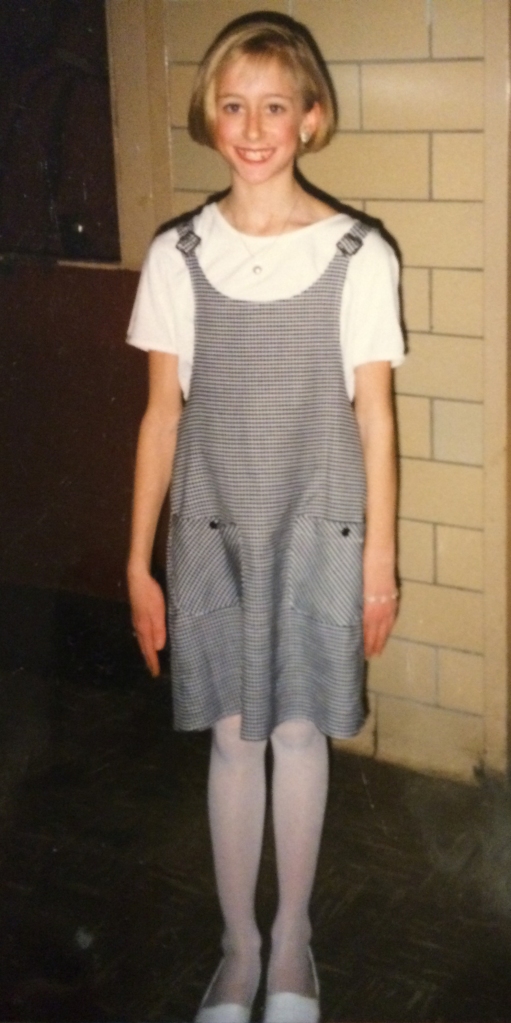
Mom wasn’t there to tell me she’d be ok, so I tried to be ok for her. I went to school the day after she died and told my sixth-grade teachers that I was fine and ready to move on. Two days after her death, I went to my sixth-grade Valentine’s Day and wore a smile the whole time. In photos, I looked like I was trying to be as proper and as poised as possible.
“Dad,” I said after Mom died, “I want to write a eulogy for Mom’s funeral.” “Eulogy” was one of those big words that I had heard Dad talk about behind closed doors. I remember looking it up in the dictionary, hoping I’d never have to hear one about my mother.
And yet, at age 11, I wrote one about Mom and read it at her funeral, composed and without tears. The eulogy, all 480 words of it, was my attempt to comfort everyone else and perhaps convince myself that all would be well. Part of it read:
“Everything happens for a reason, although that reason is often hard to find. But believe me, sooner or later in life you will find that reason. Now we should all still cry, and we should always keep Robin in our hearts, but we cannot let it bother us for the rest of our lives. We can’t keep going back to that old chapter, but look forward to the new chapter in our lives, and just hope that it brings us the best of luck and much happiness.
“This is hard to do, I know, to find that new chapter, but we can all do it if we try. Just think, my mother, Robin Jo Tenore, is walking along the streets of gold. She’s having the time of her life. She no longer suffers from pain. She is now in the hands of God. She is now in Heaven — a place where she truly belongs.”
I remember feeling disconnected when I read the piece — confused as to why I felt the need to write about my mom’s death in a Hallmark kind of way.
At the time, I thought I was strong. I wanted to seem brave, but inside I was slowly falling apart. I scrambled to pick up the pieces, wishing I could run away from it all. I kept picturing the Runaway Bunny from the classic children’s tale that Mom used to read to me.
The bunny fantasizes about what he’ll do if he’s free — he’ll become a fish in a trout stream; a circus performer on a flying trapeze; a crocus in a hidden garden. His mother tells him that, now matter where he goes, she will find him and bring him home.
“If you run away, I will run after you. For you are my little bunny.”
Children who lose a parent between the ages of 6 and 12 have an especially difficult time with death, research has found. They’re old enough to understand what death means, and yet they’re too young to know how to best deal with a profound loss.
I remember telling others around me that I had come to terms with my mom passing away. I drew pictures of dozens of smiley faces, as if to suggest I had moved on and was happy. But when I wrote in my journal at night, I wrote about my mom in the present tense on tear-stained pages. This co-existence of acceptance and denial is what Sigmund Freud called “splitting the ego.” In some ways, it’s a coping mechanism.”
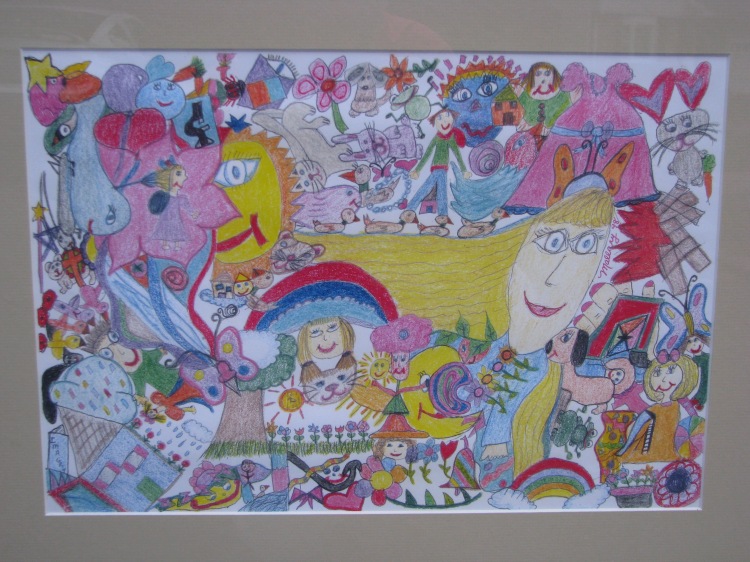
The more I thought about mom’s death, the more I felt like I had lost all control. As much as I wanted to bring Mom back and stop my little world from changing, I couldn’t. Looking for something I could control, I started to focus on my food intake. Food didn’t taste as good as it once did, and didn’t fill me up the same way Mom’s home-cooked meals did.
I thought that if I stayed the same weight that I was before Mom died, I could live life in a standstill. If I wore my hair in pigtails and pretended I was forever young, then people would care for me. I’d be the little girl, the one without a Mom, the one who needed their love and attention. I’d be special.
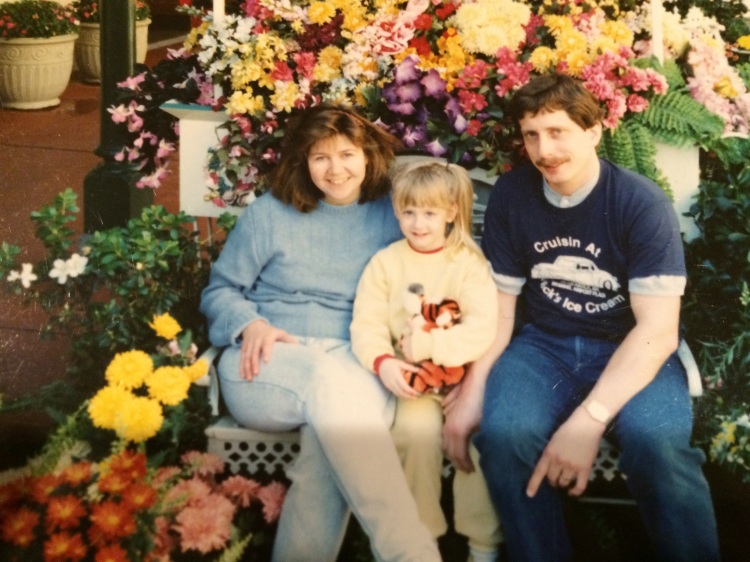
Hope Edelman, author of “Motherless Daughters,” writes about this phenomenon, saying some children identify with an earlier stage of maturity as a way of keeping their Mom’s memory alive and avoiding the finality of death. “The result,” she writes, “is an adult who retains some characteristics of an earlier developmental time, one who feels as if a piece of her were still ‘stuck’ in childhood or adolescence. To this daughter, ‘growing up’ feels not only like a mystery but also a practical impossibility. She’s still too wedded to her childhood.”
Edelman goes on to say that “when a mother dies too young, something inside her daughter always feels incomplete. There’s a missing piece she continues to look for, an emptiness she keeps trying to fill.”
I always felt empty, emotionally and physically. Restricting my food intake didn’t help, but it gave me some semblance of control. So I kept on restricting. And I ran — a lot. Running became a way to obsessively burn calories and lose more weight. All the while, I limited myself to foods like green beans, carrots, and cottage cheese. Common foods for people with anorexia.
Caroline Knapp wrote about the cottage cheese curse in her memoir “Appetites”:
“Cottage cheese, of course, is the food God developed specifically to torture women, to make them keen with yearning. Picture it on a plate, lumpy and bland atop a limp lettuce leaf and half a canned peach. Consider the taste and feel of it: wet, bitter little curds. now compare it to the real thing: a thick, oozing slab of brie, or a dense and silky smear of cream cheese. Cottage cheese is one of our culture’s most visible symbols of self-denial; marketed honestly, it would appear in dairy cases with warning labels: THIS SUBSTANCE IS SELF-PUNITIVE; INGEST WITH CAUTION.”
I fell into the self-punitive trap and kept losing weight. At my worst, I was 66 pounds, running as fast and as much as I could, and consuming no more than 400 calories a day.
Still, I wanted to lose more weight. There’s a tendency among anorexics to equate skinniness with perfection. The problem is, no matter how skinny anorexics get, it’s never skinny enough. Marya Hornbacher, author of “Wasted: A Memoir of Anorexia and Bulimia” once wrote: “We turn skeletons into goddesses and look to them as if they might teach us how not to need.”
My battle with anorexia led to four hospitalizations, two month-long stays in a psychiatric unit at Children’s Hospital in Boston and a year-and-a-half-long stay at Germaine Lawrence, a residential treatment facility for troubled girls in Massachusetts.
The hospitalizations stabilized my physically, but they didn’t address all of the emotional and mental issues under the surface. It wasn’t until I went to residential treatment that I really started to make connections between my mom’s death and my eating disorder. My counselors there helped me realize that by trying to sprint through the grieving process, I had paved the way for a painful marathon. Slowly, I began to make better choices to the point where I was healthy enough to leave in-patient treatment and live at home with my dad.
After missing three years of school, I returned to my high school junior year and joined the cross-country team. Running on the team felt empowering; I was running not because I wanted to burn calories but because I had always liked running. I met some of my closest friends on the team, one of whom remains my best friend all these years later.
I listened to my body and ate when I was hungry and stopped when I was full. It seems so simple — to just listen to your body — but it’s complicated when you have a history with eating. It’s so much easier to focus on food and your body than it is to feel.
Freshman year in college, I started to slip back into bad habits. I wasn’t restricting all the time like I did when I was younger; instead, I was secretly binging one day and restricting the next.
Several women struggle with this same type of distorted eating. Because it doesn’t fall under the category of “anorexia” or “bulimia,” it’s more often categorized as “eating disorder not otherwise specified,” or EDNOS. (How’s that for a vague categorization?) Symptoms include night eating syndrome, chewing and spitting out food, purging, binging, repeated patterns of binging and restricting, and even picky eating.
The International Journal of Eating Disorders says EDNOS — which is themost common eating disorder in the U.S. — is “often a way station between an eating disorder and recovery or, less commonly, from recovery to a full-blown eating disorder.” A 2009 study in the American Journal of Psychiatry found that more people die from EDNOS than from bulimia or anorexia.
This doesn’t surprise me. I’ve always believed that it’s easier to identify the symptoms of (and subsequently treat) bulimia and anorexia. When you’re bulimic, people start to notice when you repeatedly go to the bathroom after meals. When you’re anorexic, people see that you’re losing weight and get concerned. In my case, my weight has more or less stayed the same, making it easier to mask my disordered eating habits.

Recovery is possible, but elusive. And it’s hard to define: Does recovery mean you’re “all better,” that you never worry about your weight and always listen to your body? Does it mean you’re able to eat three meals a day? Does it mean you’re at your ideal body weight?
So often, recovery and sickness are set up as two extremes. People assume that if you’re no longer “sick,” you must be “recovered.” I’ve realized, though, that many people who struggle with eating disorders or milder forms of disordered eating are somewhere in between recovery and sickness.
They’re in the middle place.
Aimee Liu, author of “Restoring Our Bodies, Reclaiming Our Lives,” says that many people experience the “half life” of anorexia when on the road to recovery. They struggle to define it because it’s so nuanced. Those who are in this middle place “recover nutritionally and suspend the behaviors of starving, bingeing and purging. But the self-criticism, self-abuse, perfectionism, judgmentalism and restrictive mindset persist.”
I try to remind myself that it’s important to make progress in the middle place — a spot where it’s easy to get stuck.
Progress isn’t always about food. Sometimes it’s about making ourselves vulnerable enough to be loved. After years of dating and being hard on myself when none of the dates turned into relationships, I found a man (on Match.com, no less) who made me feel loved and beautiful. Troy knew about my issues with eating but instead of abandoning me because of them, he sought ways to help me. Being with Troy made my eating issues less of a secret. I couldn’t hide my weird eating quirks as much, and I could no longer pretend I was “perfectly fine.”
It’s hard being in a healthy relationship with a man you love and an abusive relationship with a disease you loathe.
Marrying Troy in October 2013 was a huge turning point for me; over the past year, I’ve moved closer to recovery than I have in the past five years combined.
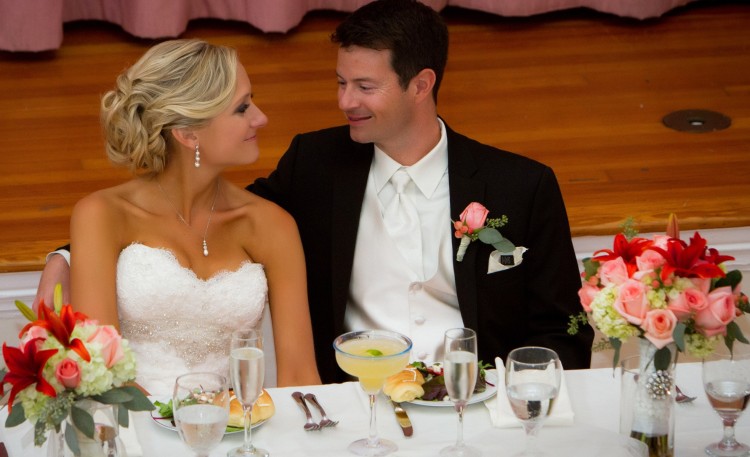
Marriage made me think a lot about my mom, and it forced me to face the reality that I was closer than I’d ever been to becoming a mom.
I kept thinking about my future kids. I didn’t want to pass along my bad habits, and I wanted to be healthy enough to have kids in the first place. Even though I have an incredibly supportive husband, I knew I needed outside support to be able to move forward in my journey. So I researched therapists and finally found one I liked. She specializes in eating disorders and understands how complicated they can be.
“You’re going to get better faster if you take a team approach,” I remember her telling me early on. “Let me recommend a nutritionist for you to see.”
I cringed at the thought of seeing a nutritionist. The last time I saw one, she seemed more interested in selling me protein shakes than in helping me.
“When you get the urge to binge, just drink a protein shake,” she said.
If only it were that simple. Binges aren’t just about a physical hunger; they’re about an emotional hunger that stems from years of self-denial.
The nutritionist my therapist recommended turned out to be an amazing fit. She, too, specializes in eating disorders and has helped me redefine what it means to be strong and healthy.
I’ve always been good at keeping secrets, and maintaining the “happy, healthy girl” perception.
It’s easy to hide behind perceptions — to pretend you have it all together when inside, you’re crumbling. The crumbly part of life becomes your secret — one that you don’t want to share for fear that people will look differently at you, judge you, or stop loving you. Vulnerability is a bitch, and a blessing.
My physique and cheerful demeanor are deceiving. I’m a runner and a vegetarian who, for the most part, eats only healthy foods in front of others.
“Oh Mallary doesn’t want any of those. Are you kidding me?” a coworker once said after hearing someone offer me Hershey Kisses.
Of course I wanted them. Who doesn’t want a Hershey Kiss? But I agreed with my coworker and said, “Thanks for offering; I don’t want any, though.”
I’ve found that the foods we turn down (but secretly want) in public are the foods we turn toward in private. The chocolate that I won’t let myself eat in public is the food I crave, the food I hide and hoard.
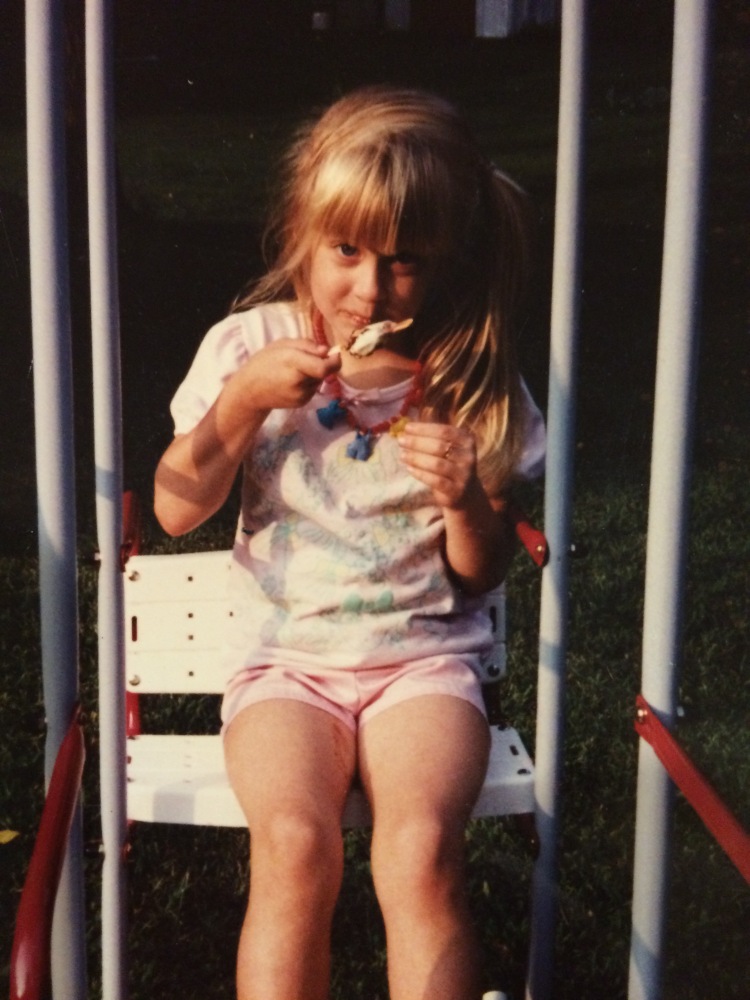
My therapist and nutritionist have pushed me to be more open about what I want, and to not let my disordered eating habits steal my desires. They’ve understood when I’ve slipped up and have helped me strive for progress, not perfection. They’ve taught me to treat my body with kindness instead of cruelty. To thank my feet and runner’s legs for carrying me so far.
They’ve also challenged me to think more deeply about why I’ve restricted and binged for so long.
Geneen Roth, who has written a lot on binge eating, says that “during the first few bites, and before we get dazed by overeating, everything we want is possible. Everything we’ve lost is here now. And so we settle for the concrete version of our lost selves in the form of food. And once food has become synonymous with goodness or love or fulfillment, you cannot help but choose it, no matter how high the stakes are.”
The truth is, food never loves us back. When we stop trying to fill ourselves with something tangible, like donuts or French fries, we discover that there are other ways to feel full. To feel loved.
Over the past year, I’ve been developing other ways to find nourishment. I’ve slowly realized that when I eat a lot one day and deprive myself of food the next, I’m setting myself up for a binge-restrict cycle that can last for days or weeks.
The danger of this cycle has become clearer to me over the past 18 weeks, which I’ve spent training for my first marathon. When I told my therapist and nutritionist that I had signed up for a marathon, they raised their eyebrows.
“Are you sure you want to run this? You’ve made so much progress lately. Training could cause a setback in your recovery.”
“We will support whatever decision you make, but we think you need to consider the risks.”
I knew that running a marathon could make me obsessive about exercising and losing weight. I could fall back on old behaviors that I’ve tried so hard to distance myself from. I could relapse.
I was willing to risk it, though. Part of me wanted to train for the marathon to prove that I could, as a sort of fuck you to eating issues that have affected me for the past 17 years. Training, it seemed, would be a test to see if I could exercise more and stay healthy enough to maintain my weight. It would be a test to see if I was willing enough to give my body the fuel and care that it needs.
Before we get better for other people — our parents, our partner, our children — we need to get better for ourselves.
Marathon training has helped me do that in unexpected ways.
There were times during my training when I wanted to quit. Nerves sometimes led to sleepless nights. I’d toss and turn, wondering: “What have I gotten myself into? I don’t think I can do it.”
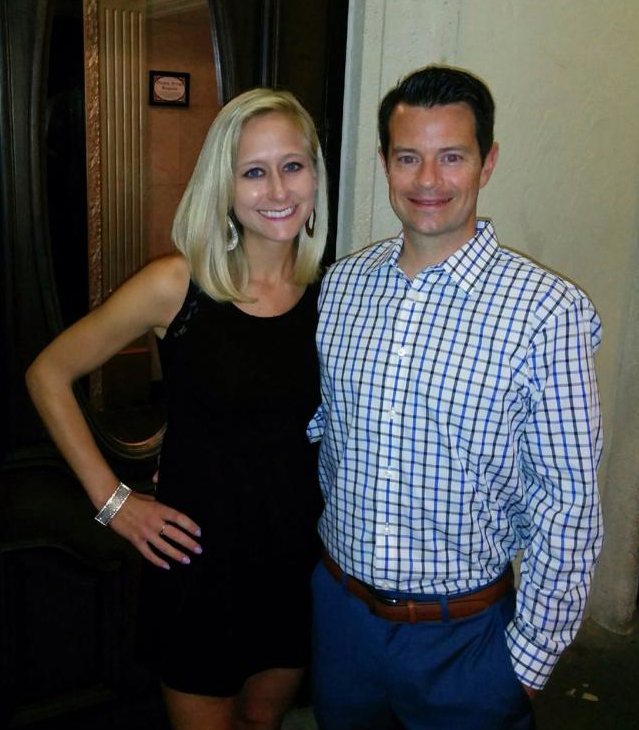
My husband Troy helped me every mile of the way. He listened to my concerns, pushed me to eat, and told me he had faith in me. He became my number one cheerleader. Every time I ran a long run on weekends, he’d meet me three miles before the finish and ride his bike alongside me. He’d cheer me on, give me high-gives, and tell passerby: “My wife is training for a marathon!” They’d usually slip in a high-five, too.
“Strong, confident woman!” he’d say, repeating the motto he always recites to help me feel better about myself.
Some days, I had to run on very little sleep. Other days, I had to run at odd hours on unknown paths. Up paved hills. Down wooded trails. Beside the ocean. On treadmills overlooking beautiful views of a city skyline. On treadmills in hotel gyms that were more like windowless hovels. I ran rain or shine. In 85-degree-weather. 26-degree weather. Brrr.
Throughout the course of my 18-week training, I traveled for work, weddings, holidays, a bachelorette party, and a funeral. I took 10 trips — to Cape Cod, San Francisco, Cleveland, Detroit, Seattle, Boston, D.C., Fort Worth, New Orleans, and Austin — and ran in all but one of those cities.
I could have made excuses to skip runs or take days off. But I kept running.
I told myself I didn’t want to focus on my pace, but the more I ran, the more fixated I became on running faster. I told my therapist how hard it was for me to not push myself toward perfection.
I’ve tried for so long to be perfect in all aspects of my life — mainly because I’ve always thought my mom wanted me to be perfect. Whenever I made a mistake, she yelled at me and made me feel guilty. When she died, I told myself I needed to be perfect; it was my warped way of holding onto her.
“What if your mom really didn’t want you to be perfect?” my therapist asked me not long ago. “What if she just wanted you to do well?”
“Then why did she yell at me whenever I did something wrong?” I asked.
“I wish I had an answer … I do know, though, that when we’re kids, and our parents yell at us like that, we think it means that they want us to be perfect.”
I had never considered the possibility that Mom didn’t want me to be perfect. Maybe she just had a bad temper and I misinterpreted it.
“If you let go of the idea that your mom wanted you to be perfect, maybe you’ll feel less inclined to hold onto perfectionism. Let go of that and hold onto the gifts she gave you.”
During my long runs, I kept going back to what my therapist said. “Let go of perfectionism, hold onto the gifts…”
At first it was hard for me to remember the gifts Mom gave me. But the harder my training got, the more I thought about the connection between my mom and running. All those track meets. The ribbons. The marathon outings.
Those were some of the greatest gifts Mom gave me. She not only gave me a passion for running; she gave me the confidence I needed to do it.
“Go Mal, Go! You can do it! Come on, honey, you’re almost there!”
During my last long run, a 22-miler, I tried running toward the good memories and away from perfectionism. It wasn’t perfect; I still worried a little about my time. But it felt freeing to let it go. To let it be.
At the end of the 22-miler, I felt happy and accomplished. And nauseous. I was surprised by how sick I felt. I thought I had stuffed my face the day before in an attempt to carb-load.
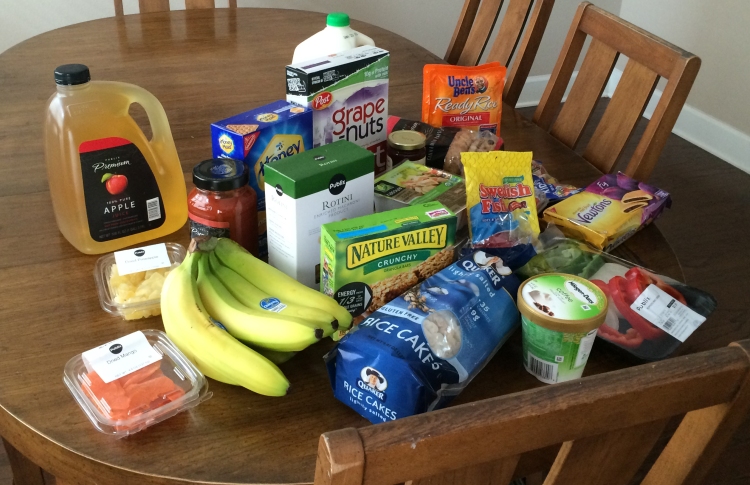
I wrote down everything I ate and showed it to my nutritionist. She added everything up and estimated that I had eaten only 1,540 calories — not even enough for a non-exercise day. At first I didn’t believe her. Was she trying to trick me? But the more I looked at the numbers, the more I started to put things in perspective. All those days when I think I’ve binged and eaten too much, I probably still haven’t eaten enough.
My nutritionist reminded me that I need at least 1,800 calories for a regular day, plus 100 extra calories for each mile I run.
She set me up with a carb-load plan for the three days leading up to the marathon and said I needed to eat 500+ grams of carbs and aim for 3,000 calories per day. She said she was proud of how well I had been doing and knew I could do it.
“If you’re going to run like a crazy person, you need to eat like a crazy person,” she said. “You’re an athlete. Take care of your instrument.”
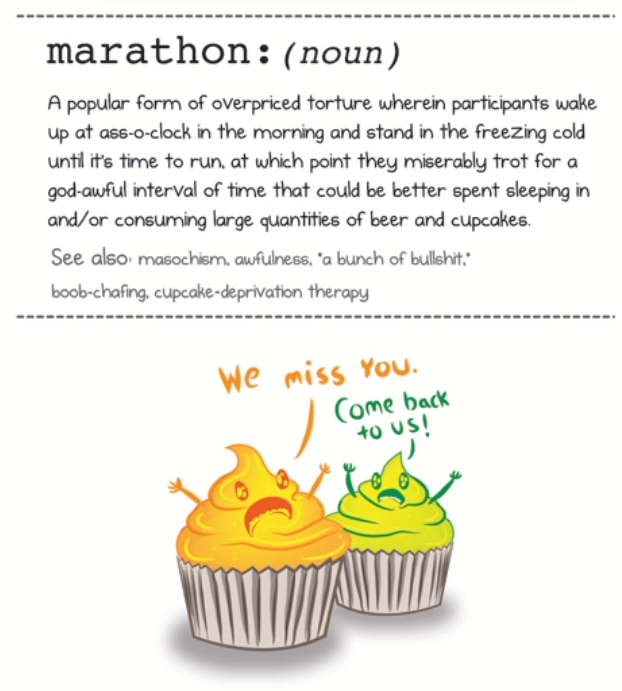
I went to the grocery store after my appointment and bought graham crackers, Fig Newtons, Swedish fish, fruit, frozen yogurt, bagels, spaghetti. All the stuff I love but rarely let myself eat.
During these last three days leading up to the marathon, I’ve tried to stick to my plan and combat worries about weight gain.
They’re still there. Thoughts about losing weight have inevitably popped up throughout my training. But instead of feeding into them or suppressing them, I’ve challenged myself to be open about them.
For as much as I’ve thought about weight loss, it hasn’t been a motivating factor while training. I’ve realized throughout the past 18 weeks that I’ve been more focused on feeling strong during my long runs than on losing weight. I spent so many years feeling physically weak when I was younger; I like feeling strong — and healthy.
As I run through Walt Disney World on marathon day, I’ll be thinking of my mom. I’ll remember her love for cheering on runners, and her big hugs at the end of the 50-yard dash races. I’ll embrace her legacy of bravery and strength.
I’ll be her Little Engine That Could.
I think I can, I think I can. … I know I can, I know I can.
26.2 miles closer to recovery.
Update: Mallary finished the marathon at 3:48 — placing in the top 2% of female racers. More importantly, she felt strong during the run and crossed the finish line wearing a smile and happy tears.